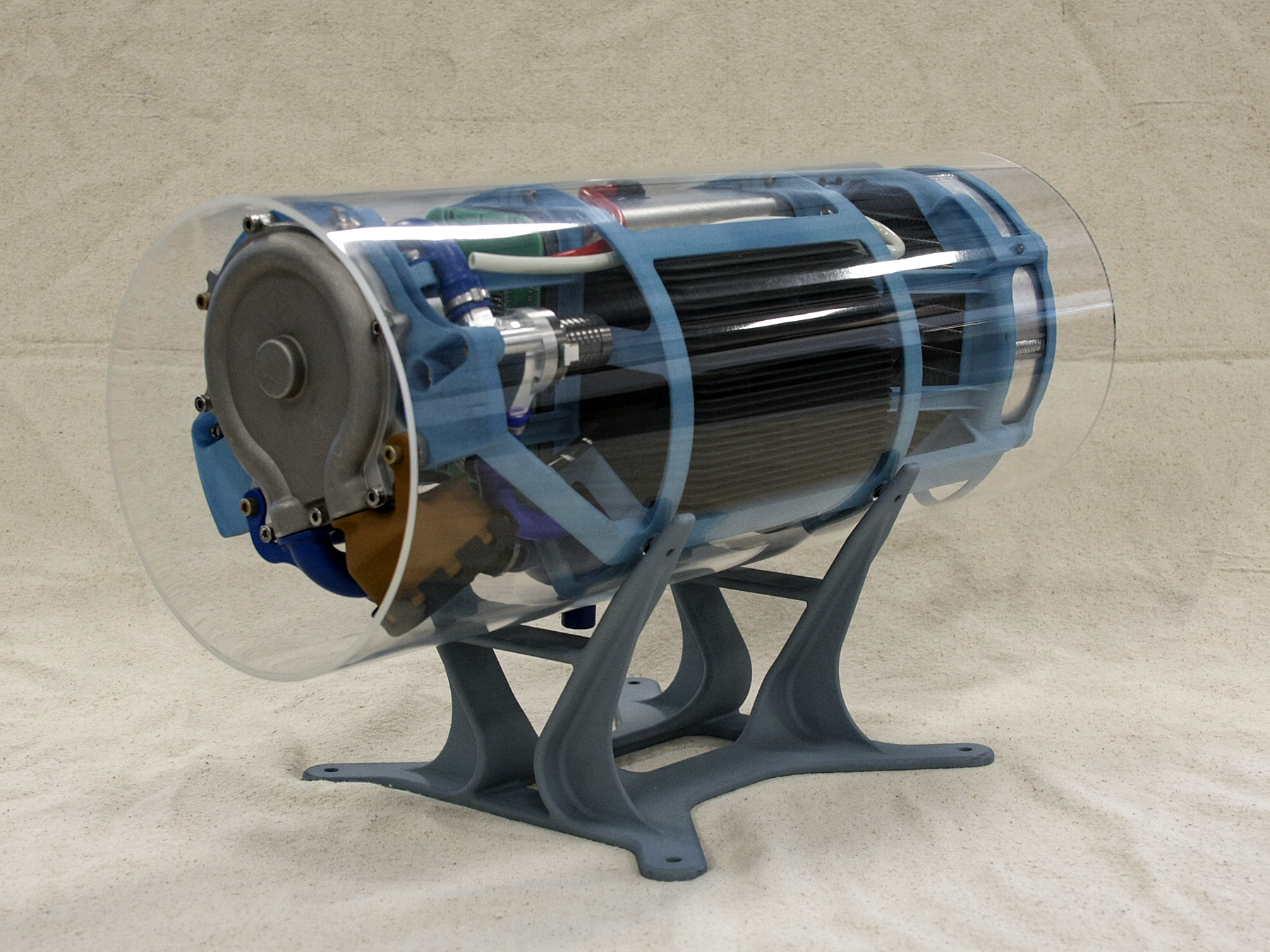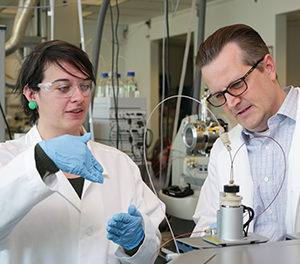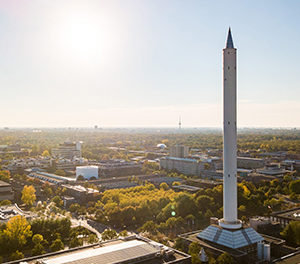A longer lasting eye in the sky

About a decade ago, the U.S. Navy was working on a way to fuel their warships on zero-emission power and wanted to share that technology with other kinds of vehicle manufacturers. And Northwest UAV, the largest unmanned aerial vehicle propulsion systems manufacturer in the U.S, was looking for a cleaner and more efficient way to power their drones—and help them stay in the air on longer missions.
“The Northwest UAV chief technology officer had been watching our work for a long time,” said Ben Gould ’02, a research engineer at the U.S. Naval Research Laboratory. So when the Navy was testing out hydrogen fuel cells and reached out to NWUAV to see if they wanted to give the technology a shot, they were primed to come aboard.
What Gould didn’t know at the time was that his NWUAV counterpart would be fellow Mines graduate Karen Dennis ’99, a program management and engineering consultant for the company. “We had no idea until our first meeting,” said Dennis. Together, Gould and Dennis and their organizations set out to change how UAVs are flown.
Right now, most UAVs of the size NWUAV is working on—under 55 pounds—are powered by combustion engines or batteries. With combustion engines, missions are limited by the amount of fuel the UAV can carry, fuel that is itself heavy.
“The combustion engine is still more popular, but there’s starting to be a shift in the market with more people interested in being in electric systems,” Dennis said.
But batteries face similar limitations: UAVs can only fly for as long as the chemical energy source (usually a metal such as zinc or lithium) in the battery allows.
“Most toy drones you get from your local electronic store have a battery that lasts 30 minutes before it lands,” Gould said. “With fuel cells, we can potentially make that four to eight times longer.”
A typical battery stores all of its fuel and an oxidizer to make power inside its container. A hydrogen fuel cell is different, because while it carries hydrogen fuel, it also “harvests air from the environment to combine with hydrogen and make power,” Dennis said.
That means the fuel cell can keep making electric power for longer, because it can breathe air like a living creature, unlike a lifeless battery.
“A fuel cell has a higher energy density by weight, which makes them better for weight savings and for longer- range missions,” Dennis explained. “Fuel cells also offer rapid refill and recharge over batteries. It takes hours to recharge a battery. A fuel cell can be refilled in minutes.”
The benefits of this kind of power source include more energy efficiency, quick-start capability, lower maintenance requirements and lower operating costs. They’re also quieter, and because they’re not burning chemicals or gas, they are a zero-emissions product, too—the only byproducts are heat and water.
Hydrogen fuel cells have proven themselves effective and safe in real-world settings. There are now more than 20,000 hydrogen fuel-powered forklifts in operation in the U.S., according to the U.S. Department of Energy. The Toyota Mirai and Hyundai Nexo also run on hydrogen power. So implementing this kind of fuel source in UAVs seems like a natural step forward.
The U.S. Naval Research Laboratory and NWUAV hope to release the first product to military and defense contractors in the first or second quarter of 2022, and to the general market by summer 2022. “You can perform real work and real missions with UAVs powered by this, but you can still be all electric,” Dennis said.
“I’ve advocated for fuel cell technology for almost 15 years now,” Gould said. “It’s any scientists’ dream come true to see something from bench-level innovation translate into commercial industry.”





